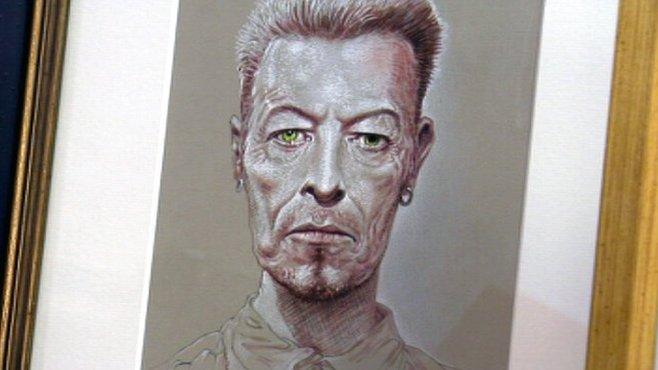Peter Howson returns to 'hell' of Bosnian war with new painting
- Published
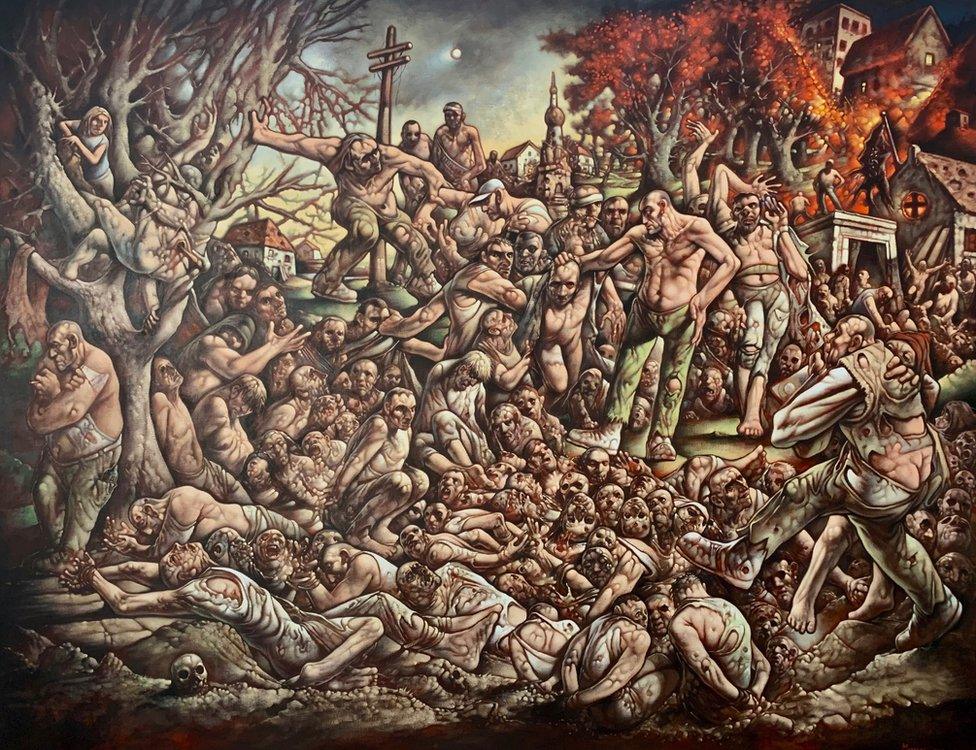
The Massacre of Srebrenica 2019 - Peter Howson
Leading Scottish artist Peter Howson says that going to Bosnia during the conflict in the early 1990s was his own personal hell.
The 61-year-old painter says it has taken a quarter of century of turmoil - in which he fought a battle with drink, drugs and periods of severe depression - to come to terms with what he experienced as a war artist.
As recently as 2013, he spent two years in a psychiatric unit following another mental collapse that doctors claim stemmed from what he witnessed in Bosnia.
But despite it casting a long shadow over a large portion of his life, Howson has decided to revisit the conflict for a new painting, which has been unveiled at Glasgow's St Mungo Museum of Religious Life and Art.
The Massacre of Srebrenica, which will be on loan to Glasgow Museums for an initial three-year period, is a large-scale painting depicting the worst atrocity on European soil since World War Two.
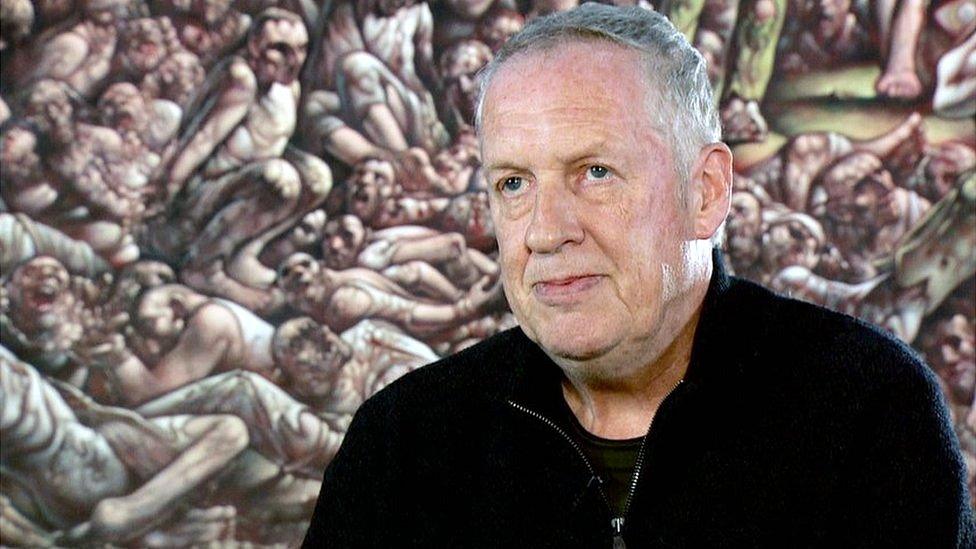
Peter Howson has returned to his Bosnian paintings to make The Massacre at Srebrenica
The genocide of more than 8,000 Muslim Bosniaks, mainly men and boys, took place in July 1995.
Howson did not witness what happened at Srebrenica but he saw many of the events that led up to the atrocity.
He first went out to the religious and ethnic conflict in the former Yugoslavia as a war artist in 1993 and admits he was not prepared for it.
"There are not many people around in Scotland today that have witnessed a war and I was shocked by what I saw when I went there," he says.
"The army took me around and I saw dead bodies, cleansed houses, two coaches that had been blown up with the bodies still left inside."
Howson was so traumatised he asked to go home within days without having done any artistic work.
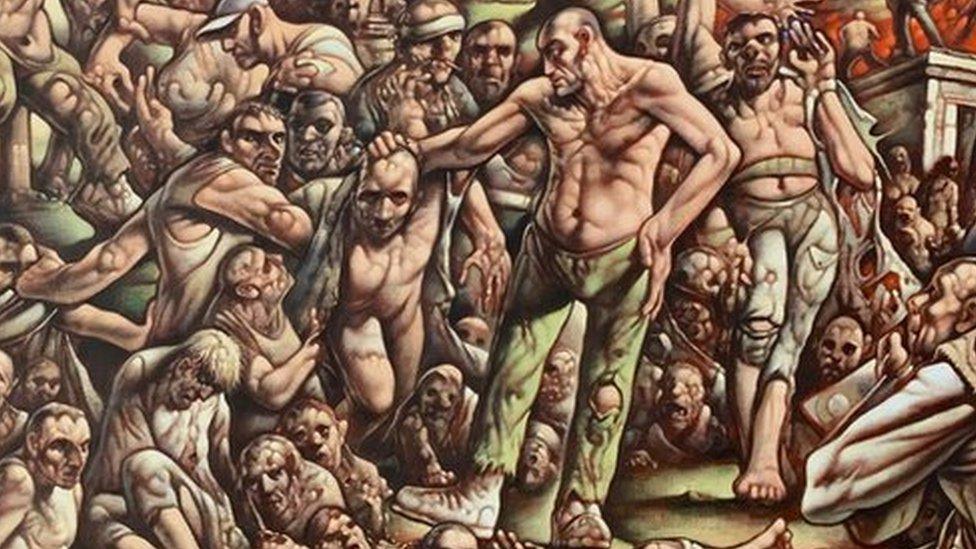
Massacre of Srebrenica 2019 - Peter Howson
However, he decided to go back about six months later and this time he created a collection of dark and disturbing works which were shown in an exhibition at the Imperial War Museum in London in 1994.
One painting in particular - Croatian and Muslim, which shows the brutal rape of a woman by two soldiers - caused controversy. It came to even greater prominence when it was bought by pop star David Bowie, who would become a friend and frequent subject of Howson's paintings.
Bowie called it the "most evocative and devastating painting" in the collection.
"When David Bowie bought the rape painting it suddenly exploded into this massive controversy. That was a good thing because I don't think many people realised what happened in Bosnia was systematic rape," Howson says.
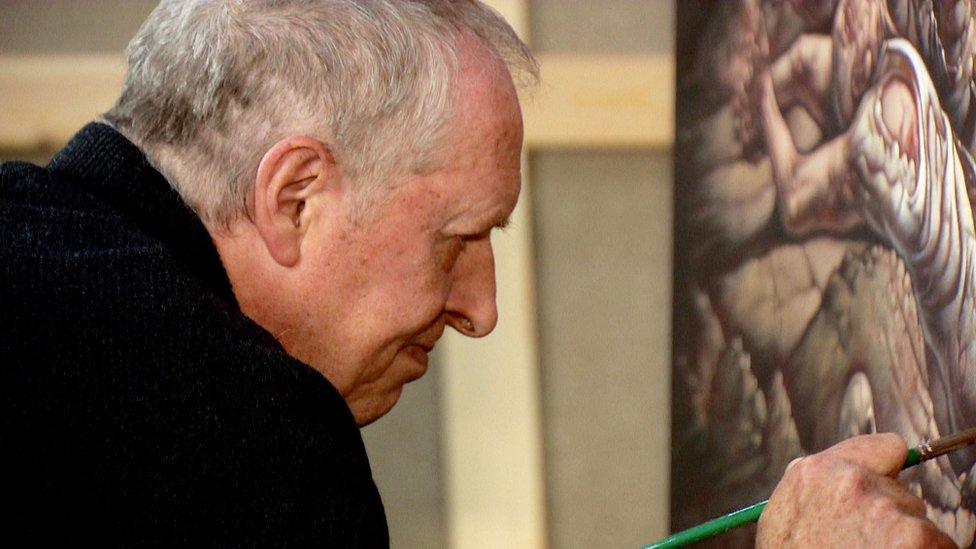
Howson said he was only really happy when he was painting
After the 1994 exhibition, the Glasgow-based artist was disappointed at the war museum's decision to select just six of the less brutal paintings for its permanent collection.
The museum's director said it should only choose images of scenes that the artist had actually witnessed.
"I was a bit shocked because Picasso never witnessed Guernica when he painted that," Howson said.
In the aftermath of his trip to Bosnia, the horror of war continued to haunt him.
His marriage to Terry, the mother of his daughter, broke up as a result of his trip and he took to drink and drugs.
'My own kind of hell'
"A lot of the time I wished I hadn't gone," he says. "But when I think rationally about it I think things are better now. I'm still friendly with Terry and I'm closer to my daughter now.
"That experience changed me for the better in a lot of ways. I went through my own kind of hell which took several years."
Given the huge personal toll the war has taken on him, it may seem strange that he would return to the subject.
Glasgow Museums had originally approached him about acquiring one of the Bosnian paintings from the time, but they are now in private collections.
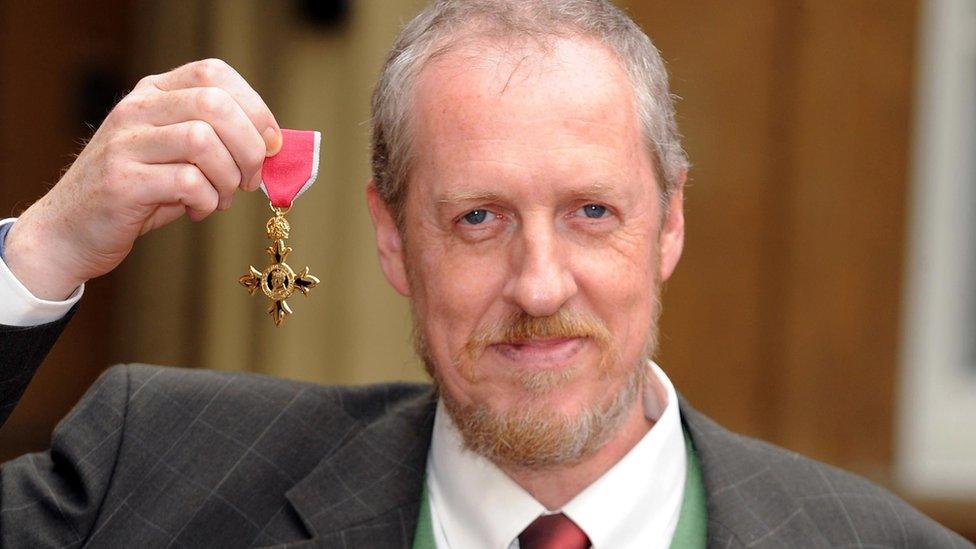
Howson received an OBE in 2009
So Howson decided to embark on painting Bosnian artworks again.
"It does affect you," he says. "I started having the dreams again when I started doing this painting, but they were not such bad nightmares."
The artist says it is "almost inconceivable" that something like the Srebrenica massacre could happen.
He hopes his painting will make people realise that life is not about the mundane things which most people think are important.
"We've got to look at the darker side of our human nature. We can be good but what happened in Bosnia made me believe that underneath it all we are not really.
"Underneath this thin veneer of civilisation is anarchy and bloodshed and terror and horror."

A number of Howson art works were auctioned earlier this year
Howson says the massacre need not have happened.
A United Nations peacekeeping force, made up soldiers from the Netherlands, had been guarding a UN safe zone when it was overrun.
"The United Nations failed completely to protect these people," Howson says.
And the artist warns that it could happen again anywhere.
"If things go beyond a certain level people start losing their minds and start doing crazy things. That's what happened in Yugoslavia and it could happen here."
- Published19 July 2019
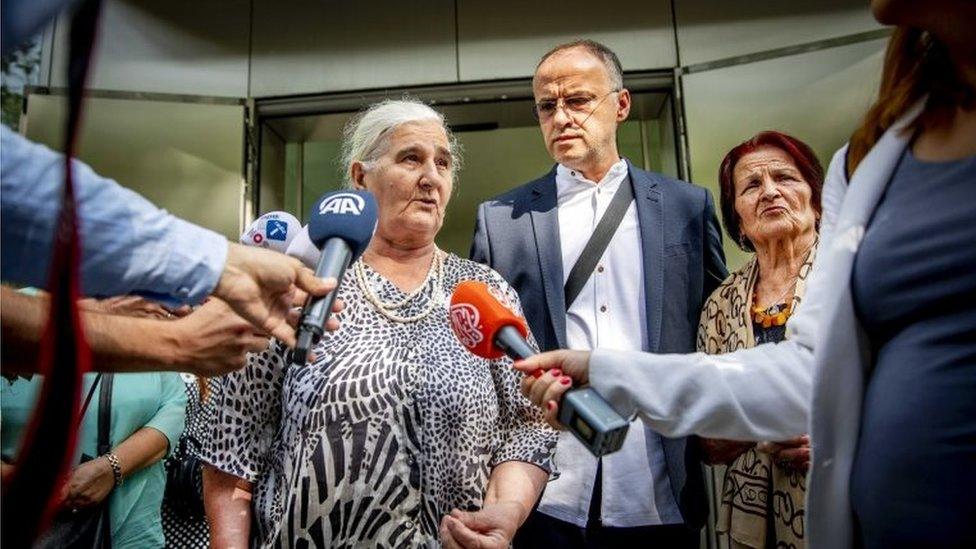
- Published29 April 2013
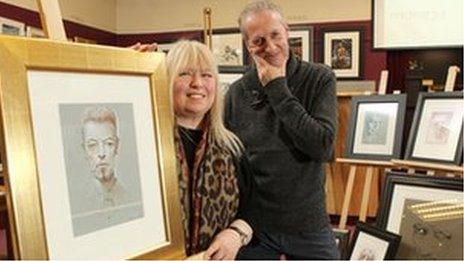
- Published15 April 2013
